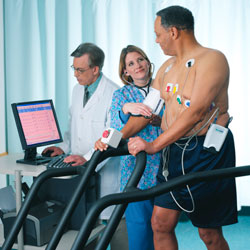
Patients often report a sudden extension force applied to the flexed arm, followed by a tearing sensation in the antecubital fossa. The diagnosis of a distal biceps tendon rupture can be made clinically for most patients. See the Guidelines for Authors for a complete description of levels of evidence. Level of Evidence: Diagnostic study, Level II-1 (development of diagnostic criteria on basis of consecutive patients-with universally applied reference “gold” standard). The biceps squeeze test is simple, reliable, cost-effective, and aids in the diagnosis of distal biceps tendon ruptures. All 65 patients had supination of the forearm in response to the test. Sixty-five patients with no history of upper extremity trauma were evaluated with the biceps squeeze test as a control group. Two patients with a positive biceps squeeze test declined surgery and did not have a return of supination with the biceps squeeze test at 3 months followup.

All patients who had surgery had return of supination with the biceps squeeze test immediately after reattachment and at 3 months followup. Twenty-one of 22 patients had operative confirmation of a complete distal biceps tendon rupture. The biceps squeeze test was positive in 24 patients. Twenty-five consecutive patients with 26 presumptive distal biceps tendon ruptures were evaluated with the biceps squeeze test. We also wanted to determine if surgical reattachment of the tendon would reestablish the supination response of the biceps squeeze test, and if patients who did not have surgery would have the same response to the biceps squeeze test months after injury. We wanted to determine if failure to elicit supination with the biceps squeeze test would indicate complete distal biceps rupture.

Using the Thompson test for Achilles tendon rupture as a model, we developed the biceps squeeze test to test the integrity of the distal biceps tendon. Dunbar, MC, USNR, Department of Orthopaedics, Portsmouth Naval Medical Center, 1361 Sanjo Farms Drive, Chesapeake, VA 23320. The opinions expressed are those of the authors and do not reflect the policy of the Department of the Navy, the Department of Defense, or the United States Government.Įach author certifies that he or she has no commercial associations (eg, consultancies, stock ownership, equity interest, patent/licensing arrangements, etc) that might pose a conflict of interest in connection with the submitted article.Įach author certifies that his or her institution has approved or waived approval for the human protocol for this investigation and that all investigations were conducted in conformity with ethical principles of research.Ĭorrespondence to: CDR(Sel) Robert P.

From the Department of Orthopaedics, Portsmouth Naval Medical Center, Portsmouth, VA and the Orthopaedics/Sports Medicine Clinic, Annapolis, MD.


 0 kommentar(er)
0 kommentar(er)
